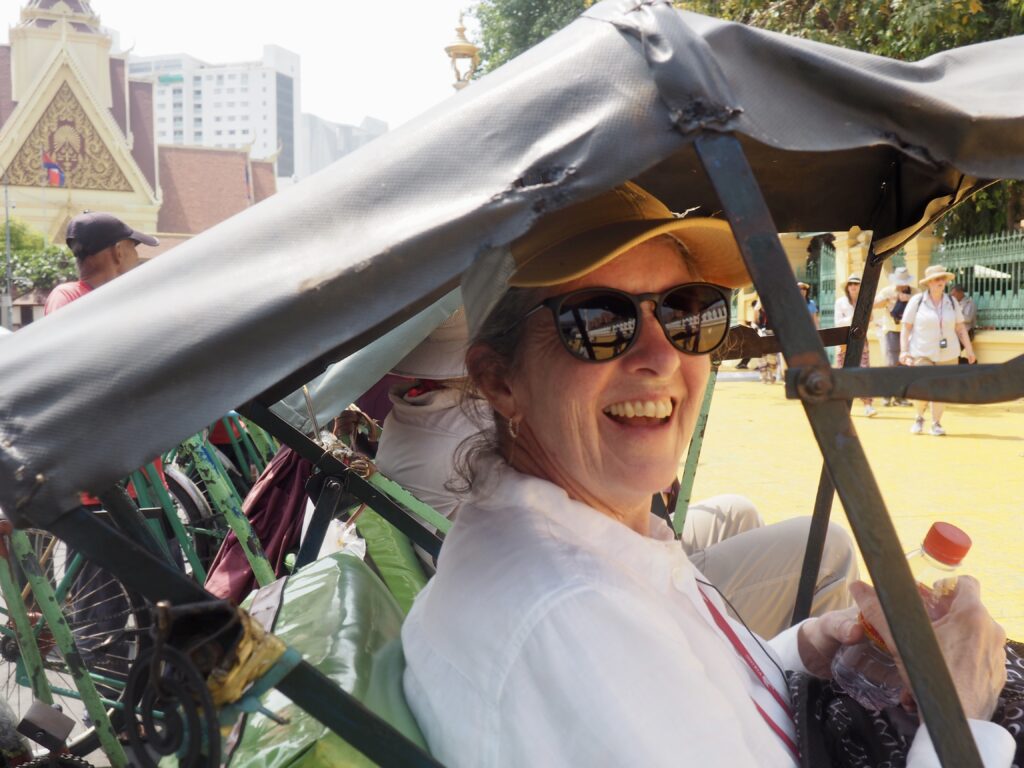







It’s quite a sight, 75 pedicabs swarming through a major city, but everyone takes it in stride. And, it’s a great vantage point for the passenger.






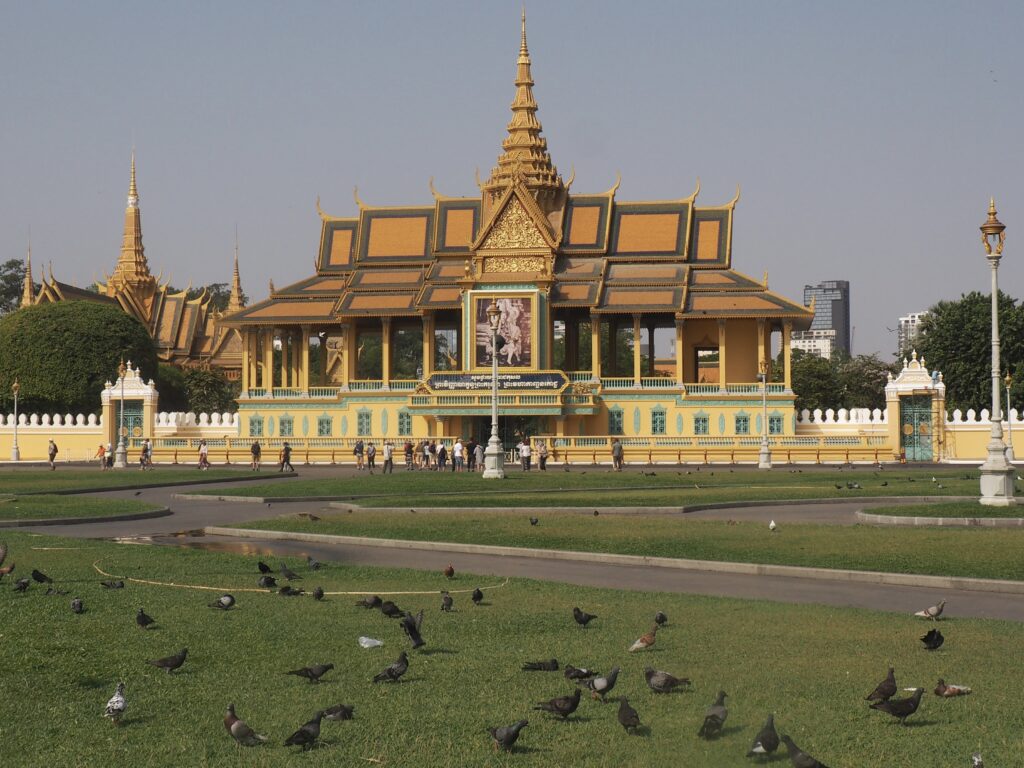
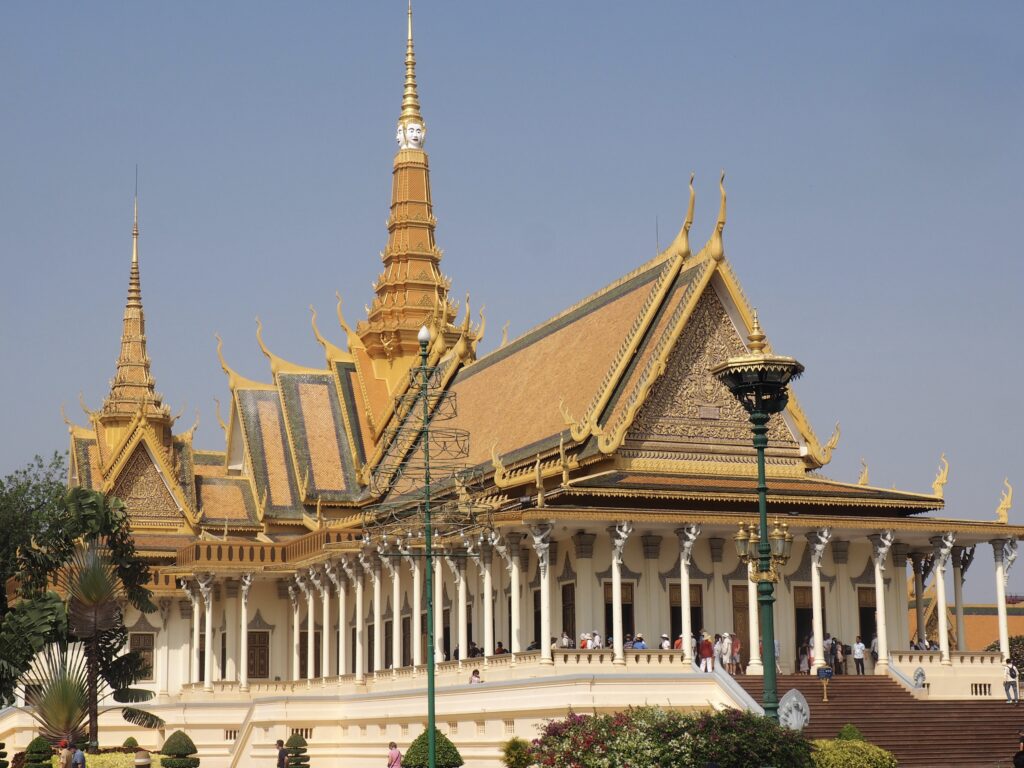
First stop, the Royal Palace. Although not a center of power, the Royal Family remains a source of identity, pride, and loyalty in this one-party state.

Every day of the week has its own color, if you didn’t know.

The most revered figure in political Cambodia is, of course, Norodom Sihanouk (known to history as Prince Sihanouk), the King who single-handedly achieved independence for his country in 1953 (having been underestimated by the French), nearly a year before Ho Chi Minh achieved the same for Vietnam, maintaining a strong monarchy in the face of historic trends. He dropped what he called his “atomic bomb” in 1955 by abdicating the throne in favor of his father and then forming a political movement (rather than party) to continue to dominate politics. That his rule and closeness to the Chinese then led to the rise of Pol Pot is his political tragedy.




We found Wat Phnom on a walk into the city on a hilltop in a lovely park (not far from Starbucks). It’s a temple pagoda apparently from the 14th century, although repeatedly rebuilt, named after a Lady Penh who pulled a tree from the river with five statues in a hollow, four of Buddha and one of Vishnu and convinced the townspeople to create a hill and the temple. It’s absolutely gorgeous and comes with a great view.

Spirit house at Wat Phnom. Spirit houses are outside most homes, businesses and temples to attract spirits away from where people want to be left in peace.
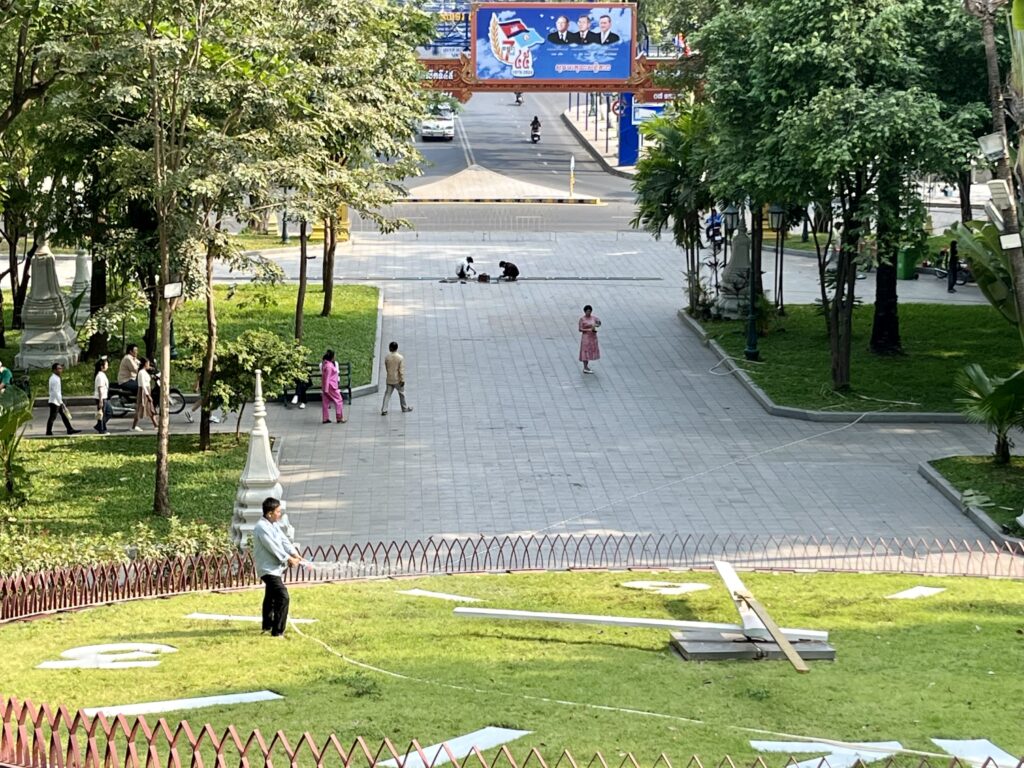
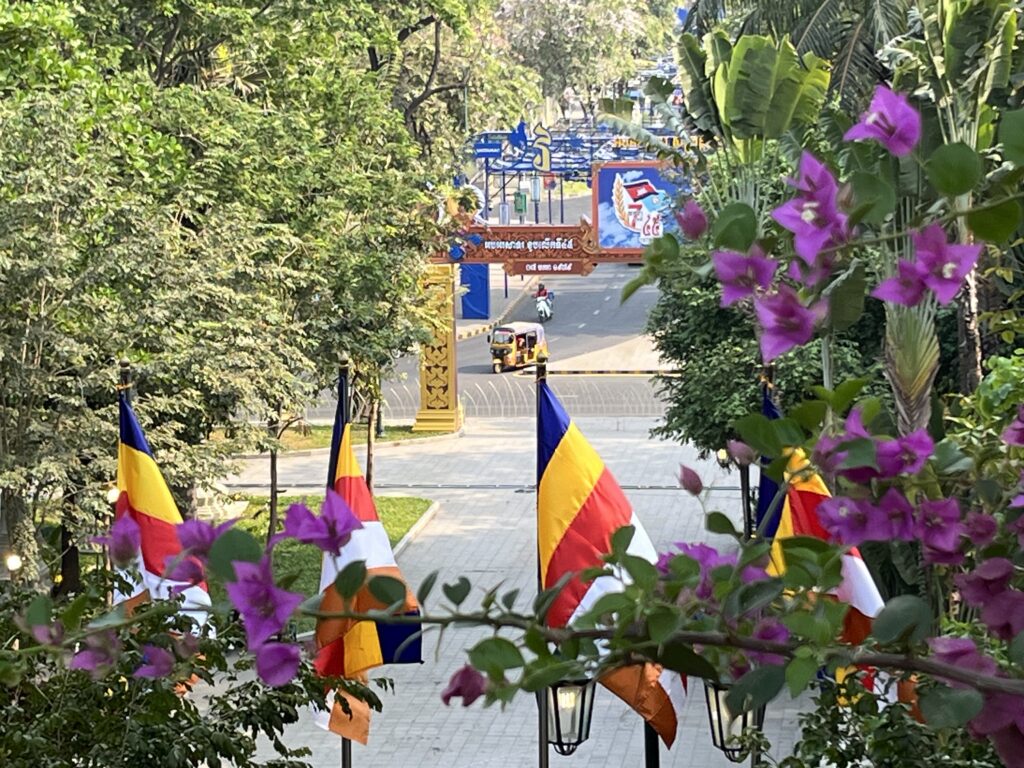


We found Phnom Penh to be a surprisingly rewarding place to walk around and our ship was docked (obviously) right there on the river. (Yes, that’s a huge clock and the rabbit – for the year recently ended – is made of bamboo.)
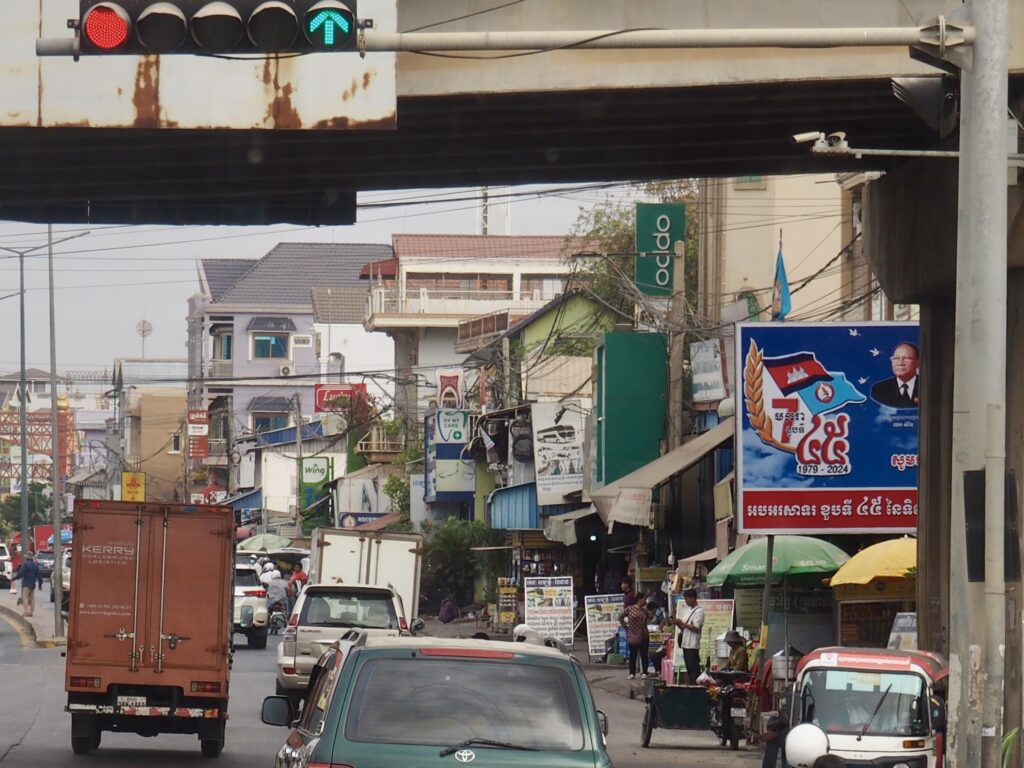
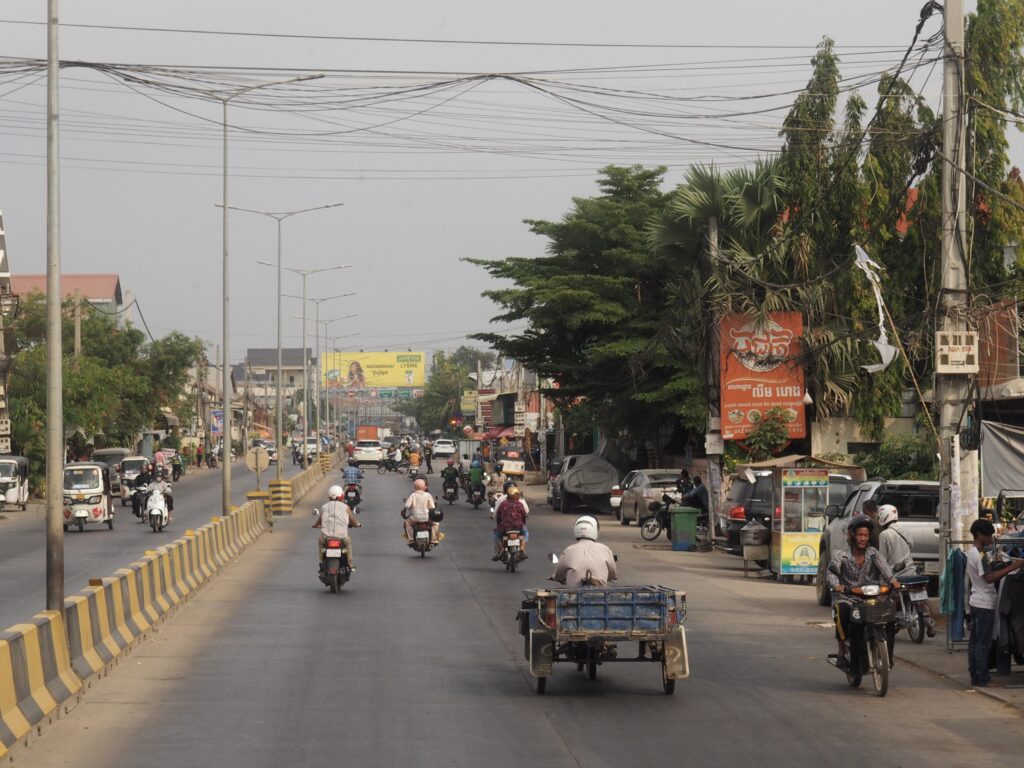
We rejoined the group for a trip out to Udon Monastery.











Udon or Udong, some 40 kilometers northwest of Phnom Penh was a royal residence and capital from the 17th through much of the 19th century and now houses a beautiful Buddhist monastery where a monk offered a blessing to travelers.



It is also a place where older people, both men and women, may go to live out the remainder of their lives in monastic retreat to achieve their spiritual objectives. There were quite a number of people visiting the monastery to visit with their parents or other family members. Our local guide, who had spent 8 years earlier in life as a monk (as do a large percentage of men), shared that he would also like to return to a monastery towards the end of his life. (The women in the photos were pleased to speak through a translator and didn’t mind having their photos taken, although it felt awkward for the photographer. Their quarters are small, but neatly kept.)

